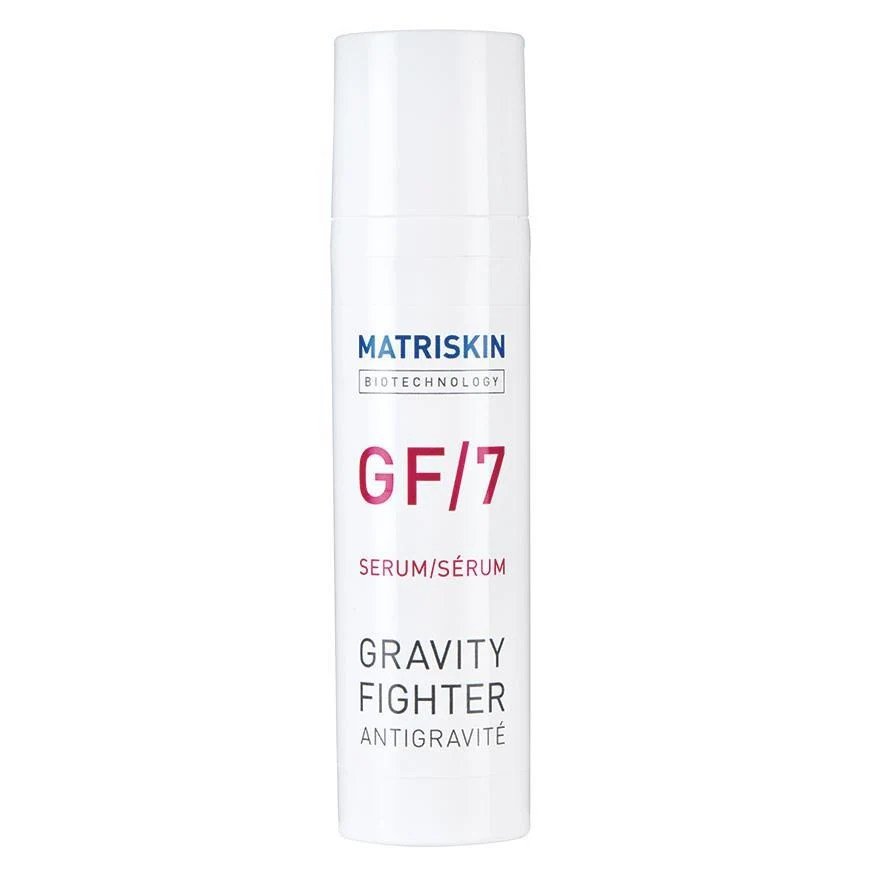GF health products are experiencing a surge in popularity, driven by a growing awareness of gluten-related health concerns and a desire for healthier lifestyle choices. This market encompasses a diverse range of consumers, from individuals with celiac disease and gluten sensitivity to those seeking to improve their overall well-being.
The demand for gluten-free options has exploded, leading to a wide variety of products, from breads and pasta to snacks and beverages. This shift in consumer preferences has prompted manufacturers to innovate and create products that are both delicious and meet the specific needs of those seeking gluten-free alternatives.
The Growing Market for GF Health Products

The demand for gluten-free health products is on the rise, driven by a confluence of factors, including increasing awareness of gluten-related health issues, changing dietary preferences, and growing consumer interest in healthier and more sustainable food choices.
Market Trends and Statistics
The gluten-free market is experiencing robust growth, with projections indicating a significant expansion in the coming years.
- A recent report by Grand View Research estimated the global gluten-free food market size at USD 5.7 billion in 2021, and it is projected to reach USD 11.5 billion by 2030, growing at a CAGR of 8.6% from 2022 to 2030.
- The increasing prevalence of celiac disease and gluten sensitivity is a major driver of market growth. According to the National Institutes of Health, approximately 1% of the US population has celiac disease, and many more individuals experience gluten sensitivity.
- The rising popularity of gluten-free diets among individuals seeking to improve their overall health and well-being is another key factor driving market expansion.
Types of GF Health Products

The growing demand for gluten-free (GF) products has led to a diverse range of options catering to various health needs and preferences. GF health products encompass a wide array of food items, supplements, and other products designed for individuals following a gluten-free diet.
Types of GF Health Products
GF health products can be categorized based on their product type and purpose.
Food Products
- Baked Goods:Bread, pastries, cakes, cookies, muffins, and other baked goods are commonly available in GF versions. These products often use alternative flours, such as rice flour, almond flour, or tapioca flour, to replace wheat flour.
- Breakfast Cereals:GF breakfast cereals offer a convenient and nutritious option for individuals following a GF diet. They are typically made from rice, oats, quinoa, or other gluten-free grains.
- Pasta:GF pasta is available in various shapes and sizes, made from rice, corn, quinoa, or other gluten-free grains. It provides a versatile option for meals and snacks.
- Snacks:GF snacks include chips, crackers, pretzels, popcorn, and other savory or sweet options. They offer a convenient and tasty way to satisfy cravings while adhering to a GF diet.
- Frozen Foods:Frozen pizzas, entrees, and desserts are also increasingly available in GF versions. These products offer convenience and a wide range of meal options.
Supplements
- Multivitamins:GF multivitamins ensure that individuals following a GF diet receive essential vitamins and minerals that may be lacking in their diet.
- Probiotics:GF probiotics support gut health and promote a healthy digestive system. They are especially beneficial for individuals who may experience digestive issues due to gluten sensitivity.
- Fiber Supplements:GF fiber supplements help to increase fiber intake, which is important for digestive health and regularity. They are particularly useful for individuals who may be lacking fiber in their GF diet.
Other Products
- Cosmetics and Personal Care Products:Many cosmetics and personal care products contain gluten-derived ingredients. GF options are available for individuals with sensitivities to gluten in these products.
- Household Products:Certain household products, such as cleaning supplies and detergents, may contain gluten. GF alternatives are available for individuals who wish to avoid gluten exposure in their homes.
Popular GF Health Products
The following table showcases some popular GF health products with their key features and benefits:
| Product | Key Features | Benefits |
|---|---|---|
| Bob’s Red Mill Gluten-Free All-Purpose Baking Flour | Made from a blend of rice flour, tapioca flour, and potato starch | Provides a versatile flour blend for baking a variety of GF goods |
| KIND Bars Gluten-Free | Made with whole nuts and seeds, and sweetened with honey | Provides a nutritious and convenient snack option for individuals following a GF diet |
| Tinkyada Gluten-Free Brown Rice Pasta | Made from brown rice flour | Offers a delicious and healthy alternative to traditional pasta |
| Garden of Life Vitamin Code Raw Gluten-Free Multivitamin | Contains a blend of raw fruits, vegetables, and probiotics | Provides essential vitamins and minerals in a gluten-free and easily digestible form |
| Renew Life Ultimate Flora Critical Care Probiotic | Contains a blend of probiotics specifically designed to support gut health | Helps to restore and maintain a healthy balance of gut bacteria |
Ingredients Commonly Found in GF Health Products
GF health products often contain a variety of ingredients to achieve specific textures, flavors, and nutritional profiles. Common ingredients include:
- Alternative Flours:Rice flour, almond flour, tapioca flour, coconut flour, potato starch, and other gluten-free flours are used to replace wheat flour in baked goods and other products.
- Gluten-Free Grains:Rice, corn, quinoa, oats (certified gluten-free), millet, and buckwheat are commonly used in GF products to provide a source of carbohydrates and nutrients.
- Legumes:Lentils, beans, and peas are excellent sources of protein and fiber, making them suitable ingredients for GF products.
- Nuts and Seeds:Almonds, cashews, walnuts, chia seeds, flaxseeds, and other nuts and seeds are often incorporated into GF products to add flavor, texture, and nutrients.
- Sweeteners:Sugar, honey, maple syrup, agave nectar, and other sweeteners are used to add sweetness to GF products.
- Flavorings:Spices, herbs, extracts, and other flavorings are used to enhance the taste of GF products.
- Thickening Agents:Xanthan gum, guar gum, and other thickening agents are used to provide texture and stability to GF products.
- Emulsifiers:Lecithin, egg yolks, and other emulsifiers help to bind ingredients together and create a smooth texture.
Benefits of GF Health Products

The growing demand for gluten-free (GF) health products is driven by the increasing awareness of gluten-related disorders and the perceived health benefits of a GF diet. This section delves into the advantages associated with consuming GF health products, exploring their potential benefits for individuals with celiac disease, gluten sensitivity, and other health conditions.
Additionally, we will compare and contrast the nutritional value of GF health products with their traditional counterparts.
Benefits for Individuals with Celiac Disease
Celiac disease is an autoimmune disorder triggered by the ingestion of gluten, a protein found in wheat, barley, and rye. For individuals with celiac disease, consuming gluten can damage the small intestine, leading to a range of symptoms including diarrhea, bloating, weight loss, and fatigue.
- Reduced Symptoms:The primary benefit of a GF diet for individuals with celiac disease is the reduction or elimination of these symptoms. By avoiding gluten, the body can heal and the small intestine can function properly.
- Improved Nutrient Absorption:Gluten-free products can help improve nutrient absorption, as the damaged intestinal lining is able to absorb nutrients more effectively without the presence of gluten.
- Reduced Risk of Complications:Long-term adherence to a GF diet can significantly reduce the risk of developing serious complications associated with celiac disease, such as osteoporosis, infertility, and certain types of cancer.
Benefits for Individuals with Gluten Sensitivity
Gluten sensitivity, also known as non-celiac gluten sensitivity, is a condition characterized by adverse reactions to gluten, but without the autoimmune response seen in celiac disease. Symptoms of gluten sensitivity can include bloating, diarrhea, fatigue, and headaches.
- Symptom Relief:A GF diet can provide relief from these symptoms for individuals with gluten sensitivity. By avoiding gluten, they can experience a reduction in discomfort and improve their overall well-being.
- Improved Digestive Health:A GF diet can help improve digestive health by reducing inflammation and promoting a healthy gut microbiome.
- Enhanced Energy Levels:Many individuals with gluten sensitivity report experiencing increased energy levels and reduced fatigue after adopting a GF diet.
Benefits for Individuals with Other Health Conditions
While the benefits of a GF diet are most pronounced for individuals with celiac disease and gluten sensitivity, there is growing evidence that a GF diet may offer benefits for individuals with other health conditions.
Finding the right gluten-free health products can be a journey, but it’s worth it for a happier, healthier you. To complement your diet, consider incorporating a high-intensity workout like Orangetheory Fitness, which has gained a lot of attention lately.
Check out these reviews of Orangetheory Fitness to see if it’s right for you. And remember, a balanced lifestyle with the right nutrition and exercise can make a world of difference in your overall well-being.
- Improved Inflammatory Bowel Disease (IBD) Symptoms:Some studies suggest that a GF diet may help improve symptoms of IBD, such as Crohn’s disease and ulcerative colitis. While the mechanism is not fully understood, it is thought that gluten may contribute to inflammation in the gut.
- Potential Benefits for Autism Spectrum Disorder (ASD):Although more research is needed, some studies suggest that a GF diet may improve certain symptoms associated with ASD, such as gastrointestinal issues and behavioral problems.
- Potential Benefits for Migraines and Headaches:Some individuals report that a GF diet can help reduce the frequency and severity of migraines and headaches. The exact link between gluten and headaches is not fully understood, but it may be related to inflammation or other factors.
Nutritional Value of GF Health Products
GF health products are designed to provide similar nutritional value to their traditional counterparts, while being free of gluten. However, there are some key differences to consider.
GF health products cater to a specific dietary need, ensuring individuals can enjoy delicious and nutritious food options. This focus on specialized needs is also evident in the approach of common grounds health care , a platform dedicated to providing comprehensive and accessible healthcare solutions.
Just like GF health products offer tailored choices, common grounds health care aims to empower individuals with personalized health strategies, fostering a holistic approach to well-being.
- Fiber Content:GF products may have lower fiber content compared to traditional products, as gluten-free flours often have a lower fiber content. This is important to consider for individuals who need a high-fiber diet.
- Nutrient Enrichment:Many GF products are fortified with vitamins and minerals to compensate for any nutrient loss during processing. However, it is important to check the labels to ensure that the product meets your individual nutritional needs.
- Added Sugar and Fat:Some GF products may have higher levels of added sugar and fat compared to traditional products. This is often done to improve taste and texture, but it is important to be mindful of these added ingredients.
Choosing and Using GF Health Products

Embracing a gluten-free lifestyle can be both rewarding and challenging. Making informed choices about gluten-free (GF) health products is crucial for managing your health and ensuring you get the nutrients you need. This section will provide practical tips for navigating the world of GF products, ensuring you select the best options for your individual needs and preferences.
GF health products are becoming increasingly popular as people seek healthier alternatives. These products often focus on specific dietary needs and can be a great way to manage certain health conditions. However, it’s important to remember that even with GF health products, a holistic approach to health is essential.
This is where the concept of common ground health care comes in. It emphasizes the importance of addressing all aspects of well-being, from nutrition and exercise to mental health and social connections. By incorporating this approach, you can create a truly sustainable and effective path towards better health, even when following a GF diet.
Reading Food Labels
Understanding food labels is essential for identifying gluten-free ingredients. The FDA has strict regulations regarding labeling of gluten-free products.
- Look for the “Gluten-Free” label on food packaging. This label indicates that the product contains less than 20 parts per million (ppm) of gluten.
- Carefully review the ingredient list. Common gluten-containing ingredients include wheat, barley, and rye. Be aware of hidden sources of gluten like modified food starch, hydrolyzed vegetable protein, and malt flavoring.
- Check the “Contains” statement. This section lists potential allergens, including gluten.
Incorporating GF Health Products into a Balanced Diet
A balanced diet is crucial for overall health, regardless of dietary restrictions.
- Focus on whole, unprocessed foods. Include plenty of fruits, vegetables, lean proteins, and whole grains that are naturally gluten-free.
- Choose GF alternatives to your favorite foods. There are now gluten-free versions of bread, pasta, cereal, and even pizza.
- Be mindful of portion sizes. Even gluten-free foods can be high in calories and fat if consumed in excess.
Selecting GF Health Products
- Consider your individual needs and preferences. Do you have any specific dietary restrictions or allergies? Are you looking for a particular flavor or texture?
- Read reviews and compare products. Look for products that have positive reviews and are well-rated by other consumers.
- Check the nutritional information. Look for products that are low in added sugars, saturated fat, and sodium.
- Choose products that are certified gluten-free. This certification ensures that the product has been tested and meets the FDA’s standards for gluten-free labeling.
The Future of GF Health Products

The gluten-free health product industry is poised for significant growth, driven by increasing awareness of gluten-related disorders and a growing demand for healthier and more diverse food options. This section explores the emerging trends, innovations, and future potential of this dynamic sector.
Emerging Trends and Innovations, Gf health products
The GF health product industry is witnessing a surge in innovative product development and technological advancements. This section highlights some of the key trends shaping the future of GF products:
- Expansion of Product Categories:Beyond traditional GF staples like bread and pasta, the industry is witnessing a significant expansion into new product categories. This includes gluten-free snacks, desserts, meat alternatives, dairy products, and even ready-to-eat meals. This diversification caters to a wider range of consumer needs and preferences, fostering greater inclusivity and accessibility within the GF market.
- Focus on Functional Ingredients:The industry is increasingly incorporating functional ingredients into GF products, such as probiotics, prebiotics, and superfoods. These ingredients contribute to enhanced nutritional value and support overall well-being. This trend is driven by consumer demand for products that not only address dietary restrictions but also promote health and wellness.
- Technological Advancements in Gluten Detection and Removal:Advancements in technology are leading to more efficient and reliable methods for gluten detection and removal. This includes the development of innovative enzyme-based technologies that can effectively break down gluten proteins. These advancements contribute to greater product safety and ensure that GF products meet stringent standards.
- Personalized Nutrition:The future of GF health products lies in personalized nutrition. This involves tailoring products to individual dietary needs and preferences. This could include customized GF meal plans based on individual health goals, allergies, and sensitivities. This personalized approach is likely to become increasingly prevalent as consumers seek more tailored and effective solutions.
Potential for New Product Development
The growing demand for GF products opens up significant opportunities for new product development. This section explores some potential areas for innovation:
- Plant-Based GF Meat Alternatives:The rising popularity of plant-based diets presents a significant opportunity for developing innovative GF meat alternatives. These alternatives can be made from ingredients like legumes, grains, and vegetables, offering a sustainable and healthy option for consumers seeking to reduce their meat consumption.
- GF Fermented Foods:Fermented foods are gaining popularity for their health benefits, including improved digestion and gut health. The development of GF fermented foods, such as yogurt, kimchi, and sauerkraut, can provide a diverse range of options for GF consumers.
- Functional GF Beverages:The beverage industry is witnessing a surge in functional drinks, such as those containing probiotics, antioxidants, and adaptogens. Developing GF versions of these beverages can cater to a growing segment of health-conscious consumers.
Technological Advancements
Technological advancements are playing a pivotal role in shaping the future of GF health products. This section highlights some key areas of innovation:
- 3D Printing for Customized GF Foods:3D printing technology offers exciting possibilities for creating customized GF foods. This technology allows for the creation of personalized food products with specific nutritional profiles and textures, tailored to individual dietary needs.
- Precision Fermentation for Gluten-Free Proteins:Precision fermentation techniques allow for the production of gluten-free proteins that mimic the taste, texture, and functionality of traditional gluten proteins. This innovation can revolutionize the development of GF baked goods, pasta, and other products.
- Artificial Intelligence (AI) for Gluten-Free Recipe Development:AI-powered algorithms can be used to develop innovative GF recipes that are both delicious and nutritious. These algorithms can analyze vast amounts of data to identify optimal ingredient combinations and cooking methods.
Future of GF Health Products and Well-being
The future of GF health products is bright, with a focus on innovation, inclusivity, and well-being. This section explores how GF products are poised to play a significant role in promoting overall health:
- Promoting Dietary Diversity:The expansion of GF product categories encourages dietary diversity, offering consumers a wider range of options to meet their nutritional needs and preferences. This inclusivity promotes healthier eating habits and reduces the risk of nutrient deficiencies.
- Supporting Gut Health:Many GF products are enriched with probiotics and prebiotics, which are essential for gut health. These ingredients promote a balanced gut microbiome, contributing to overall well-being and reducing the risk of digestive issues.
- Addressing Food Allergies and Sensitivities:The development of GF products provides safe and accessible food options for individuals with gluten sensitivities and celiac disease. This helps to improve quality of life and reduce the risk of complications associated with gluten consumption.
Closing Summary

The future of GF health products is bright, with ongoing advancements in technology and research paving the way for even more innovative and delicious options. As consumer awareness and demand continue to rise, the market is poised for continued growth, making gluten-free products a significant part of the future of food and health.
Commonly Asked Questions
What are the main differences between celiac disease and gluten sensitivity?
Celiac disease is an autoimmune disorder triggered by gluten, while gluten sensitivity is a less severe reaction that doesn’t involve an autoimmune response. Celiac disease requires a strict gluten-free diet to prevent damage to the small intestine, while gluten sensitivity may cause symptoms like bloating, diarrhea, and fatigue.
Are all gluten-free products healthy?
Not necessarily. While gluten-free products can be healthier, some may be high in sugar, fat, or processed ingredients. It’s important to read labels carefully and choose options that are low in sugar, fat, and sodium.
Can I still get gluten from cross-contamination?
Yes, cross-contamination is a common concern for those following a gluten-free diet. It’s important to be mindful of potential sources of gluten, such as shared utensils, cutting boards, and food preparation areas.